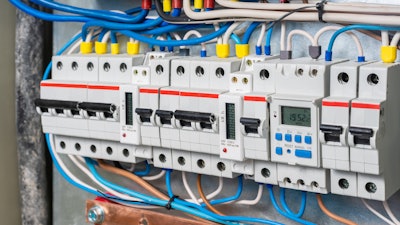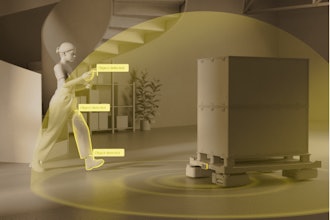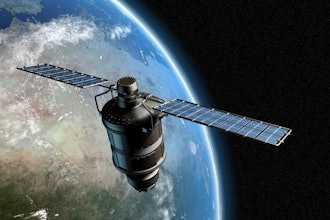
The green-energy transition has become a major focus over the last few years amid growing concerns about the state of our environment. As a result, billions in investment capital has been pouring into renewable-energy solutions like solar power and wind.
Meanwhile, the underlying technologies that will make the energy transition a reality remain the unsung heroes of the transition. For example, the basic circuit breaker hasn't seen a significant change in design since the late 19th century, when Thomas Edison developed them.
In recent years, it has become clear that upgrading the circuit breakers in our nation's power grid will be critical for the energy transition.
The problems with upgrading the aging energy infrastructure
In fact, most of the U.S. electric grid was constructed in the 1960s and 1970s. In fact, more than 70% of the grid is over 25 years old, making it especially vulnerable to severe weather and other threats. This is why we're seeing more and more widespread power outages that are lasting longer than in decades past.
The transition to renewable energy further complicates matters due to the fact that these energy sources are intermittent. Whenever the sky is overcast for an extended period, solar panels aren't producing any energy and the same is true of wind turbines during exceptionally calm weather patterns.
On the other hand, renewable sources like solar and wind can produce far more energy than usual on other days when the sun is especially bright or the wind is blowing particularly hard against the turbines. As a result, renewable-energy sources can create sudden spikes that cause problems with controlling the frequency and voltage in the system, exacerbating the issues with the aging grid.
Conventional circuit breakers aren’t up to the task of transforming the power grid
Situations like this make upgrading the circuit breakers in the energy grid essential. Circuit breakers must protect against power surges and short circuits triggered by unexpected events like lighting strikes, equipment failures and more. They must also isolate any faults as quickly as possible to keep any damage from cascading throughout the system.
Unfortunately, conventional circuit breakers exhibit several problems due to the physical limitations of their design. Because they are mechanical, conventional circuit breakers are now too slow at closing circuits when such issues occur, resulting in high fault currents and electrical arcs that cause additional wear on the breaker contacts.
DC-based systems like wind, solar and energy storage are susceptible to especially high current rise times requiring reaction times in a single microsecond. As such, bidirectional capabilities are also required to support current flow both to and from the power grid. However, while newer solid-state technologies do fix the switching-speed issue, they do so at a significant cost — by wasting electricity.
Of course, the main purpose of circuit breakers is to open quickly in the event of a problem, so they are closed most of the time, allowing a steady flow of current. While closed, circuit breakers continuously conduct current, so minimizing conduction losses is critical to reducing wasted energy — especially when it comes to energy efficiency, the primary focus of the energy transition.
Solid-state circuit breakers switch much faster than traditional mechanical circuit breakers, but at the cost of higher conduction losses resulting in significant wasted energy that must be dissipated as heat. Thus, eliminating that heat raises the cost, weight and complexity of solid-state circuit breakers that utilize conventional semiconductor switches.
The trouble with IGBT switches
Solid-state circuit breakers (SSCBs) utilize power semiconductors instead of mechanical contacts to rapidly open a circuit without any moving parts. Because semiconductors can open a circuit in only microseconds, they also dramatically reduce the amount of energy that can damage the system.
Within SSCBs, we have seen upgrades in the semiconductors used to power the switching. Until now, the type of power semiconductor switches commonly used for SSCBs used in AC and DC grid applications has been the insulated-gate bipolar transistor (IGBT). Unfortunately, significant conduction losses occur with IGBTs versus mechanical contact-based switches. The result is a voltage drop of about 1.75 volts per IGBT, increasing to 2.75 volts when a series diode is added in traditional IGBT circuits.
In fact, standard SSCB implementation involves several IGBT switches in a series, raising the aggregate voltage drop by 2.75 volts with every switch added to the circuit. Multiplying the current by the aggregate voltage drop reveals the amount of power lost in such circuits.
Given that grid applications involve hundreds of amps, using IGBT switches loses hundreds of watts of energy. This translates to considerable amounts of wasted energy alongside the addition of expensive thermal management systems to deal with all that heat generated by the lost energy.
The best of both worlds
However, Ideal Power’s B-TRAN bidirectional switch solves the problems caused by IGBT switches, resulting in SSCBs that offer the best of both worlds: ultra-fast switching and exceptionally low conduction losses. The switch resembles a symmetrical bipolar junction transistor with two controlling base connections, enabling it to conduct in both directions.
Thus far, studies show that B-TRAN has a faster turn-off time than IGBT switches with a voltage drop of only 0.6 volts at 50 amps — resulting in a voltage drop four times lower than that of a bidirectional IGBT SSCB. From a practical standpoint, B-TRAN dissipates only 360 watts, versus more than 1,500 watts dissipated by a bidirectional IGBT-based circuit in a 12 kV 50A SSCB.
Additionally, due to its bidirectional design, a single B-TRAN device replaces four devices (two IGBTs and two diodes) in a conventional AC or DC circuit breaker. Using fewer components typically means smaller systems, increased reliability and reduced system-level costs.
Thus, SSCBs equipped with B-TRAN switches make perfect sense in mass-scale applications like the power grid and renewable-energy solutions.























